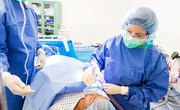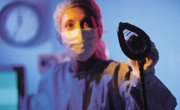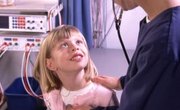A respiratory therapist (RT) is a skilled health-care professional with many patient-care responsibilities. However, some would like to advance further and practice as a physician. While the education and training requirements would be the same as anyone else applying to medical school, the vast background knowledge and clinical experience of an RT would definitely make medical school and residency training easier.
So, You Want to be a Doctor?
A certified and well-trained RT is an integral part of the health-care team. The knowledge and skills contributed by a skilled RT are significant. RTs are critical in urgent and emergency situation, especially when a patient's airway is at risk of being compromised. However, sometimes an RT needs to take instructions from nurses or physicians. Their skills are limited to the management of the respiratory system. Working closely with physicians, a motivated RT may want to transition into a career in medicine. There is the attraction of more responsibility, more training in management of the entire patient, greater opportunities for outpatient care and, of course, better pay. However, this needs to be balanced against the thought of competing to get into medical school, four years of medical education (and with it, medical school tuition) followed by at least three years of residency training.
MCATs
The first step in crossing over to a career in medicine is getting into medical school, which is a very competitive process. In addition to your undergraduate degree and other certifications, all schools in the U.S. require MCAT (Medical College Admissions Test). It is a one-day test involving about 144 multiple-choice questions and two writing samples. It tests scientific knowledge, verbal comprehension and writing ability It is a computer-based exam offered at many centers around the country. Preparation is required for the MCAT. With a background in the medical field, the test should be easier. However, consistent studying is required, usually three to six months. There are numerous courses and books available to assist in preparation. It is also vital to take practice tests, many of which can be obtained from the MCAT website. The cost of the test is $230. You will receive individual scores for each section of the test, as well as a composite score. The highest possible score is 45. The average score of a student successfully entering medical school is 31.
Essays
In addition to previous degrees and test scores, schools are interested in your reasons for becoming a physician. This is often related in the form on a entrance essay. Here is where an RT would have an advantage because of her experiences. It is important to write clearly and without any grammatical errors. You need to convey why you think the school should choose someone like you over a young kid just out of college. You need to emphasize that you are well aware of the additional training requirements expected and define what you hope to achieve in the long term by earning an MD (medical doctor) degree.
Application Process
Spend some time researching medical schools. It is unlikely to find a school that will give you a discount on the number of credits required based on your training, but it doesn't hurt to ask. You can identify schools by their location, prestige or special programs offered. Once you pick a number of schools, usually about 10 to 20, you need to download the relevant application forms for each school. They are very similar. Submit you application to each school along with an application fee, which varies. About one-third of the schools you apply to should be highly competitive, about one-third should be average and the rest should be less distinguished schools.
Interviews
Once you've mailed in your applications, wait for interview requests. These will usually come by email. Schedule your interviews and make sure you prepare for them. You can practice with physicians at your hospital. Each interview lasts 20 to 30 minutes. The major theme of the interview will be about your motivation to go to medical school after being trained as an RT. Make sure you have clear reasoning. It doesn't have to be fancy, though. If you really want to go to medical school to help people with cancer because your grandmother recently died of breast cancer, it's perfect reasonable to say that. Or if you wanted to be an MD all along but had to become an RT to help with family expenses, that's fine, too. Be sure the interviewer understands your reasons. The interview is also a good time to play up on your clinical skills, experience and research, if any.
Medical School
After your interviews, medical schools will start sending out acceptance letters. Getting into med school is just the beginning. The next area to focus on is paying for medical school. If you have funds saved up or family members who can pay the bills, that's the best. The cost of medical school tuition can vary from $25,000 to $50,000 a year. In addition, there is the cost of books, rent, food and other day-to-day expenses over four years. Loans are widely available and the school can assist you. Additionally, many scholarships are available for medical school, based on both merit and need.
Becoming an MD
Once you're in medical school, work hard and keep your eye on the prize--becoming a full-fledged physician. There will be many challenges (and exams) along the way. Given your experience as an RT, you will find it much easier than many of your colleagues. Try to help them, especially when you enter the clinical phase of your training, typically the last two years.
Related Articles
References










